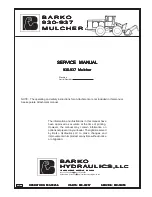
Installation and operating instructions Wilo-Sevio AIR D 23
SHUTDOWN/DISPOSAL English
6.3.
Commissioning the aeration
After the function test has been performed suc-
cessfully, the system can be put into operation.
The aeration system is switched on using a sepa-
rate operating point provided by the customer. By
default, there is only a distinction made between
the operating states on and off.
Additional operating states, such as intermittent
operation or temporal control must be discussed
individually.
6.4. After activation
Regularly check for air bubble formation on the
media surface during operation. If one aerator or
whole aerator groups fail, you can recognise it by
the bubble appearance.
We also recommend checking the air intake into
the aeration system using a manometer in the in-
let pipe. Deposits (pressure increases) or defects
(pressure decreases) cause a change of pressure
in the inlet pipe.
Note that a pressure increase of 20 mbar requires
performing the maintenance measure “Cleaning
the diaphragm surface”. The max. permissible
pressure increase in the system is 50 mbar. Higher
deviations may damage the disc diffusers.
7. Shutdown/disposal
• All work must be carried out with the greatest
care.
• The required protective equipment must be worn.
• When carrying out work in basins and/or tanks,
the respective local protection measures must be
observed in all cases.
• During any work, a second person must be pre-
sent.
• Lifting equipment in perfect technical condition
and officially approved lifting gear must be used
for lifting and lowering the product.
7.1. Temporary decommissioning
For this type of deactivation, the aeration system
remains installed and is ready for operation at any
time.
During standstill, a min. water level of >1 m (dur
-
ing danger of frost >2 m) must remain in the op
-
erating space to protect the diaphragm. Further-
more, it must be ensured that the temperature in
the operating space and of the media does not
fall below +5 °C.
Furthermore, during standstill times, a 10 minute
test run with maximum loading must be per-
formed daily.
7.2. Decommissioning for maintenance work and/or
storage
The system must be switched off and secured
against being switched on again without permis-
sion. The operating space must be drained com-
pletely and cleaned. Work on removal and storage
can then commence.
When draining the basin, we recommend to keep
the aeration system in operation. This prevents
foul odours and deposits on the bottom of the
basin.
DANGER due to toxic substances!
During work in an environment hazard-
ous to health, e.g., in sewage or wastewater
treatment plants, there is an increased risk
due to bacteria and viruses. To mitigate the
increased risk, heed the following points:
• Open wounds must be cleaned and treated
immediately!
• Eating and drinking is strictly prohibited!
• Appropriate protective equipment must be
worn!
• Disinfect persons and tools when leaving the
unit!
7.2.1. Removal
Removal is done in the reverse order to
installation:
1. Remove drainage pipe
2.
Loosen pipework fixation
3. Remove pipework
4.
Remove base support fixation
7.2.2. Return delivery / storage
Return delivery
For shipping, the parts must be packed in
tear-proof plastic bags of sufficient size in such a
manner that they are tightly sealed and
leak-proof. The parts may only be shipped by
forwarding agents who have been instructed ap-
propriately.
Please also refer to the “Transport and storage”
section!
Storage
• Thoroughly clean all components and decontami-
nate, if necessary.
• Store in a dry and frost-proof location.
•
Place on a firm surface and secure it against slip
-
ping and falling over.
• Protect components from direct exposure to the
sun to prevent brittleness of the plastic parts.
Please also refer to the “Transport and storage”
section!
7.3. Recommissioning
Before recommissioning, the aeration system
must be cleaned of dust and contaminants. Dur-
ing operation and storage, the diaphragm is sub-
ject to natural wear and hence must be checked
for cracks and elasticity before installation. Sub-
sequently, the aeration system can be installed
according to the section “Installation”. After
installation, a function test must be performed
according to the section “Commissioning”.
















































